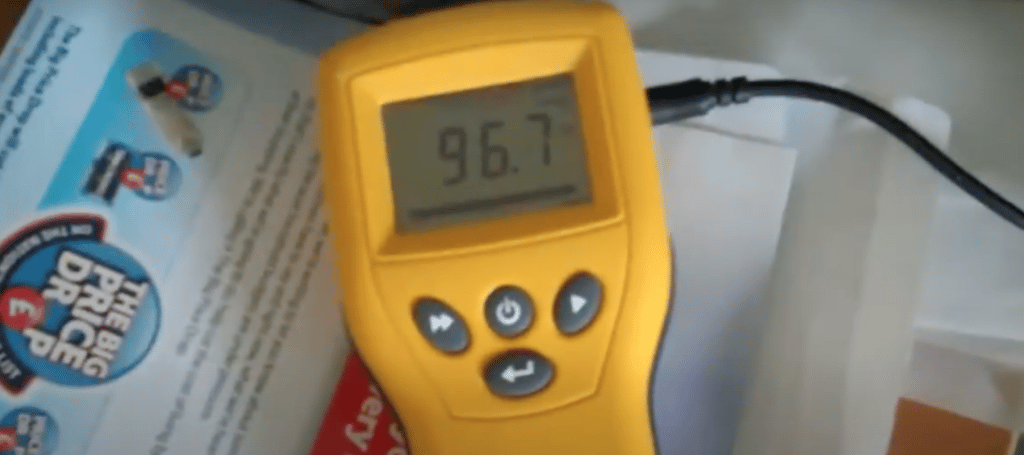Damp meter basics – false readings
In this video one of the problems which can result in an electronic moisture meter over-reading. Damp meter basic is just that, the video isn’t going to make anyone an expert. The moisture meter is just a tool and can help or hinder accurate damp diagnosis. It’s important to use a moitire meter properly and with practice it can become an invaluable bit of kit. Used without care though, it may lead to mistakes.
In the featured house the walls are a little damp in places. A meter isn’t really necessary to see the defects causing penetrating damp; they are obvious. However, a meter can be very helpful, particularly if moisture profiling is used. This means taking lots of sequential measurement to ‘map out’ the extent of moisture. It doesn’t matter that an electrical moisture meter is calibrated for wood, because the readings are qualitative. As such they are very useful for finding out the relative dampness of one part of a wall in relation to another.
Important damp meter basics include moisture profiling. This should carried out on the same material; there’s no point comparing the readings from say, plaster, to the naked masonry next to it. Different materials offer different conductivity, so profiling is better done only one material at a time. Plaster is useful for this.
Damp meters and metal foil
However, as can be seen in the video, profiling can be upset by some things. In this case there is a thin film of metal foil behind the wallpaper. The moisture meter goes ‘mad’ when this is tested. This alone tells the surveyor that something is wrong and the foil is identified promptly. Careful removal of foil at the pin positions can allow profiling to continue though.
Good practice dictates that where there are external defects these should be attended to first. There is no point plastering damp walls or, installing damp courses (not that one was needed here anyway), whilst rainwater is still coming in. Always identify and fix leaking gutters and such first. Nevertheless, more than one surveyor has made the mistake of assuming that dampness is due to an external defect he’s seen, when in fact there is also another underlying damp problem too. Fix the obvious defect, but never assume that there isn’t something else going on too. A detailed inspection and the use of good damp meter basics will help here. The moisture profile should match the suspected water ingress, arising via the defect externally. If for example if there is a vertical line of high reading running up a plastered wall to the location of a blocked rainwater hopper then fine; We have a confirmation. Sometimes the act of profiling will throw up questions, because the profile is unusual and perhaps departs from the anticipated location. This is one reason why electronic moisture meters are so valuable to a surveyor.
Even when a meter over-reads due to metal foil it is very useful. Without it the surveyor would not have known that the foil was there. Now he knows about the foil he is ‘on notice’. This is useful because foil behind paper indicates a potential history of some sort of damp problem. It may have been a penetrating damp issue, rising damp or even condensation. A surveyor will have to look and think, to get the answer to this. There may be a quite innocent reason for the foil, but the surveyor must investigate.
Get dampness basics right.
Damp meter basics matter. It’s a sad fact that there are quite a few damp specialists and surveyors who don’t know them. Our surveyors know them well and also a number of advanced techniques too. Are meters fallible? No, they are not. The meter can read high or low in many materials for a wide variety of reasons. It is not the damp meters fault if it over or under-reads for some reason. It is the surveyors fault for not making allowances for this behaviour.
We use many bits and pieces of flashy equipment. Meters, thermal cameras, chemical tests, anemometers and such. There is not one of these which can’t be misused. That is why we spend so much time and effort training and testing ourselves. Damp meters cannot diagnose damp; surveyors can. Eyes, experience and common sense are a large part of surveying. When we survey for homeowners or commercial clients we bring common sense with us.
To speak to an expert surveyor who really understands damp meter basics (and more besides), call us on Leeds 265 2752 York 566577 or Sheffield 224 5121 or email us via our contact page

